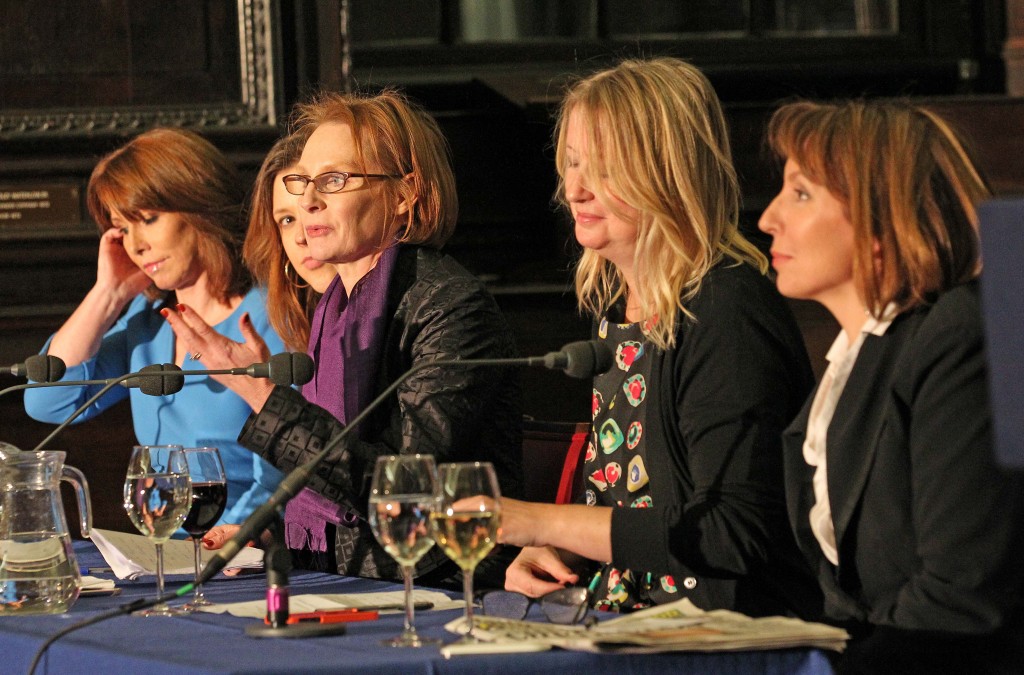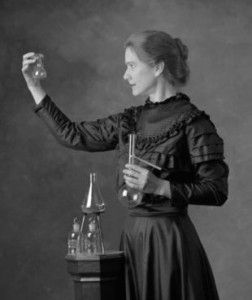limitation of statement and ethic complex

Women in Media Debate at The London Press Club. L-R Kay Burley, Carla Buzasi, Anne McElvoy, Lisa Markwell
Synopsis
In Underrepresentation or Misrepresentation, Kimura points out women’s lack of math ability as reason for their absence in math and science. Begin with irony to feminists, Kimura assails many social commonsense of women’s situation. After asserting there is difference between women and men in mathematic ability which is innate and hasn’t changed for a long time, he comes up with another viewpoint that such ability of math is to do with career choice, the combination of which is his main point. Along with several related parts about women’s less interest in science and girl’s low representation in doctorate as a lateral support, Kimura ended by putting forward a interesting alert: women have been overhired in scientific fields while men suffered academic discrimination.
Limitation of evidence and impatience to persuade
The essay sounds like a typical yet one-sided voice echoing in the debate about women’s absence of science. As to me, the biological difference is an unavoidable hard nut to crack for women. However, the voice itself may have some limitations as well. It seems to me that based on a more logical part about objective research about ability difference of two genders, author tries to collect nuances as many as possible to support men-ruling theory. There’s a very inappropriate example the author uses: women’s high representation of secretarial work reflect female’s better verbal capacity. Can we say that minorities have more finger dexterity so they undertook most labor works in US last century? Should the phenomenon make sense and be maintained? Also, author seems to try to find fault in women’s relatively high representation in biology to associate it with women’s superiority of language and inferiority of mathematics. I don’t know if it can satisfy author if women don’t gain high representation in all scientific fields. What will be the “reasonable” explanation if one day women’s representation in physics also increases? As for the last over-hire part, the way to describe the phenomenon is incomplete since it only mentions the hire ratio of women rather than the ratio of women to be hired as high position researcher. Many female faculties may suffer from career indifference and don’t have chance for advance. “Forty years ago, women made up just three percent of full professors in science and engineering fields, a figure that inched up to ten percent sixteen years later, according to the NSF.”(Why Men Dominate Math and Science Fields, by Jeanna Bryner)
Ethical complex
Meanwhile, we are going to discuss something important in research: the ethical principles. Whether or not these papers about gender difference moral? As a very complex core, research ethical code requires scientists to report their paper accurately and honestly, which involves with how to report to avoid producing misleading information or offer support for potential discrimination. My psychology teacher has been refused to do a research based on pregnant women’s frequently forgetfulness because the research may bring potential information that pregnant is “stupid”. Also, “Study about people’s interpretation of information conveyed by different color of clothes may offer support that women be blamed for what they wear when assault happens.” Is the research about different IQ among races offering evidence for racist? Are so many informal researches displayed on television about different traits among “types” of people and races bringing bad influences to equality and supporting bias? Could scientists reject to do some research in spite of opportunities to publish articles as to avoid potential misrepresentation? I think the researches about gender differences are in such debate.
Conclusion
There are many studies about gender differences. I believe we shall see them with critical thinking, realizing the complication these issues involve with, trying to accept partly but not wholly. At the same time we shall dispute the misleading and distorted interpretation of such studies.
Blog1: complex issue of women scientists
In Women At the Top in Science, Valian explicitly explores the reasons why women have underrepresentation in almost every field, and, specifically the mathematic and scientific sections. After politely declining two possibilities of biological based difference and a lower level of women’s engagement with research careers, professor Valian points out the conclusion that the innate tendency to put men and women in distinct categories gives an accumulated advantage to men and disadvantage to women.
The author has done a very good job, using many useful writing skills to convince readers, such as the compliance technique which disputes other hypotheses at first and followed by true point of the essay. Also, she also uses different tones and sequence of vocabulary. For instance, the author decides to quote Howard Georgi, incremental theorist, first, whose opinion is more close to that of writer. At some extent, the author over simplifies the complicate debate of first two hypothesis. The illustration of her point lacks some significant angles.
The article effectively uses the data of average math score of teenager from different genders and races to illustrate the point that mathematical competence can be nurtured. Though Valian mentions the less variable distribution of girls, she avoids digging deeper by focusing on the decreasing gap between top score percentage of boy and girl. However, I argue, that only the skill and certain pattern to solve complex question with known answer can be nurtured, but the ability to create new method to problems with unknown solutions can be hard to train. We can see the cited data is all average score of high school level mathematics. Is this suitable data to discuss people at the top of the mathematic pyramid? It is not reasonable to compare average people rather highly talented individual will pursue a life career as mathematic or hard scientific research. “The differences were especially large at the tails of the distributions, specifically, the top one percent, five percent and ten percent.” This reveals an apparent difference of the ability in the top level between the two genders. They go on to say “Small mean differences combined with modest differences in variable can have a surprisingly large effect on the number of individual who excel.” The relatively tiny gap of ability may lead to important distinction in high-level science work. Because of this, the author shouldn’t disregard the biological part of the complex issue but only focus on social and cognitive sides. We should consider the possibility that there is small biological distinction between two genders which is important to advanced mathematic research.
I do believe the very truth that social element such as schema and advantage play a crucial role in women’s difficulty of advancing to higher position and tend to underestimate women staff’s work. The judgment-change and standard-shift experiment is very strong, clearly indicating the gap between schema of prestigious scientist or engineer and schema of women. Yet there’s still a small flaw: the schema and its outcome is of social background, but the underlying assumption lies on a simplification plane: an idealized social environment in which people intend to be fair without intentional discrimination. Even in a solitude computer model, bias causes huge inequality over time, so we can delude that in the real world, women’s situation is even worse. Therefore, I think she lack certain practical points and should consider adding theories that are suitable for a more realistic world.
Welcome to UR Blogs
Welcome to your student blog for the FYS-Women in Science!

